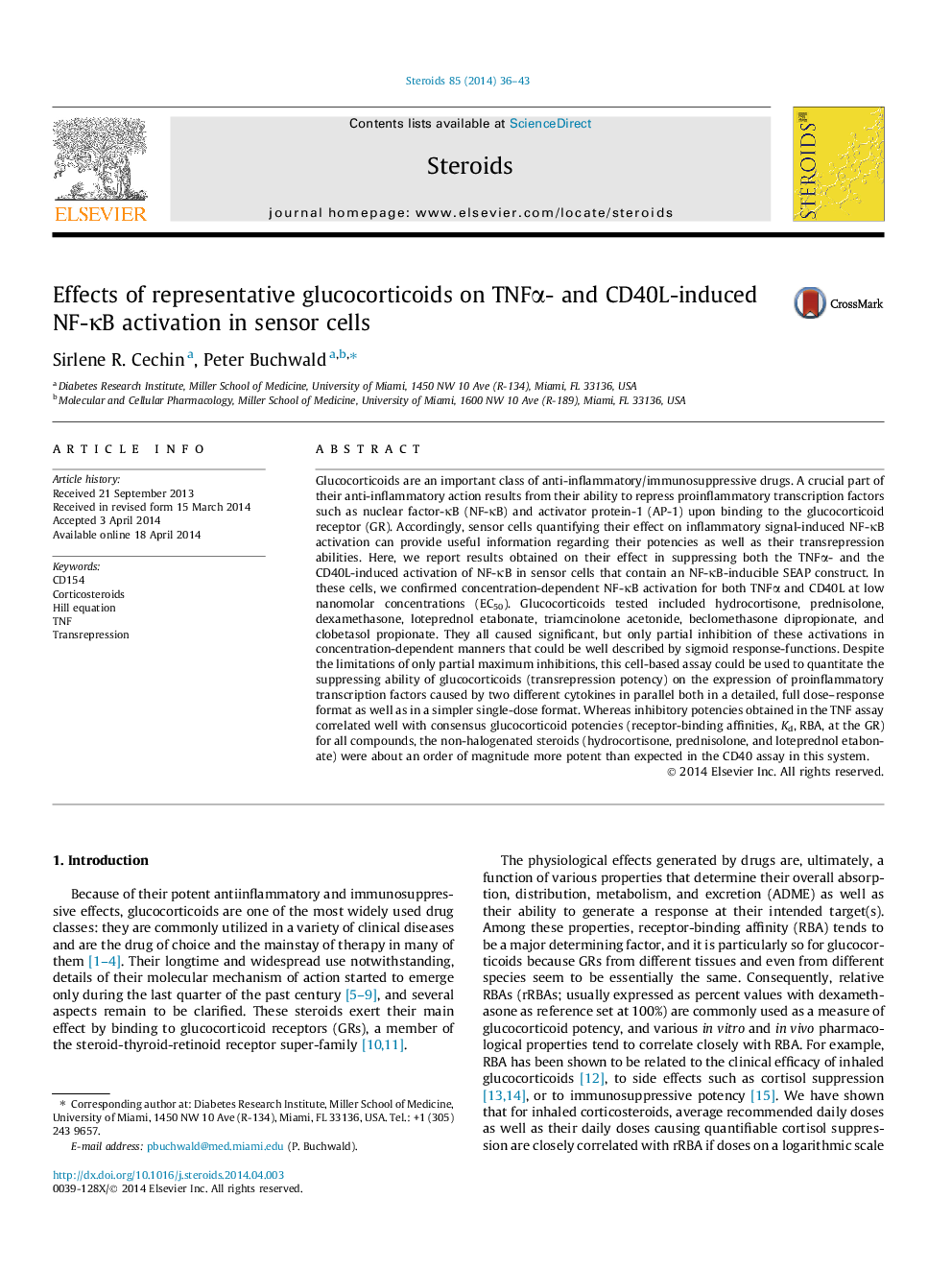| کد مقاله | کد نشریه | سال انتشار | مقاله انگلیسی | نسخه تمام متن |
|---|---|---|---|---|
| 2027961 | 1542722 | 2014 | 8 صفحه PDF | دانلود رایگان |

• Cell-based assay used to quantitate glucocorticoid activity (transrepression potency).
• Inhibitory activity on cytokine-induced NF-κB activation is assessed.
• Inhibitory activity can be assessed in parallel for TNFα and CD40L induced response.
• Sigmoid-type concentration-dependent inhibition confirmed for all steroids tested.
• Non-halogenated steroids were found more potent than expected in the CD40 assay.
Glucocorticoids are an important class of anti-inflammatory/immunosuppressive drugs. A crucial part of their anti-inflammatory action results from their ability to repress proinflammatory transcription factors such as nuclear factor-κB (NF-κB) and activator protein-1 (AP-1) upon binding to the glucocorticoid receptor (GR). Accordingly, sensor cells quantifying their effect on inflammatory signal-induced NF-κB activation can provide useful information regarding their potencies as well as their transrepression abilities. Here, we report results obtained on their effect in suppressing both the TNFα- and the CD40L-induced activation of NF-κB in sensor cells that contain an NF-κB-inducible SEAP construct. In these cells, we confirmed concentration-dependent NF-κB activation for both TNFα and CD40L at low nanomolar concentrations (EC50). Glucocorticoids tested included hydrocortisone, prednisolone, dexamethasone, loteprednol etabonate, triamcinolone acetonide, beclomethasone dipropionate, and clobetasol propionate. They all caused significant, but only partial inhibition of these activations in concentration-dependent manners that could be well described by sigmoid response-functions. Despite the limitations of only partial maximum inhibitions, this cell-based assay could be used to quantitate the suppressing ability of glucocorticoids (transrepression potency) on the expression of proinflammatory transcription factors caused by two different cytokines in parallel both in a detailed, full dose–response format as well as in a simpler single-dose format. Whereas inhibitory potencies obtained in the TNF assay correlated well with consensus glucocorticoid potencies (receptor-binding affinities, Kd, RBA, at the GR) for all compounds, the non-halogenated steroids (hydrocortisone, prednisolone, and loteprednol etabonate) were about an order of magnitude more potent than expected in the CD40 assay in this system.
Figure optionsDownload as PowerPoint slide
Journal: Steroids - Volume 85, July 2014, Pages 36–43